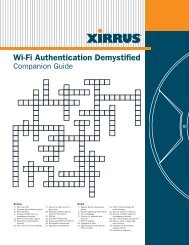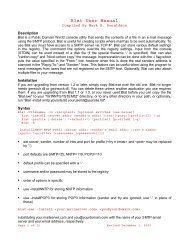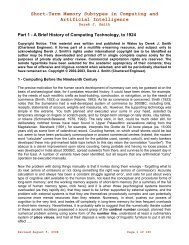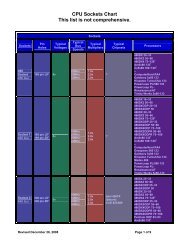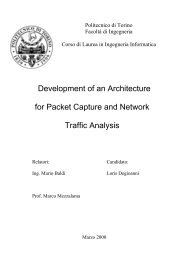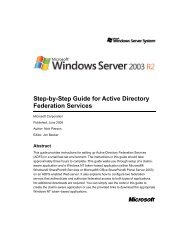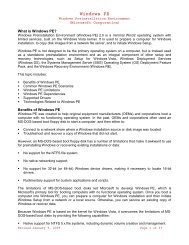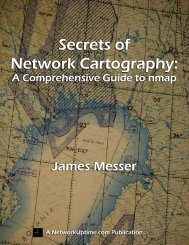A History of Viruses.pdf - Bandwidthco Computer Security
A History of Viruses.pdf - Bandwidthco Computer Security
A History of Viruses.pdf - Bandwidthco Computer Security
You also want an ePaper? Increase the reach of your titles
YUMPU automatically turns print PDFs into web optimized ePapers that Google loves.
A <strong>History</strong> <strong>of</strong> <strong>Viruses</strong><br />
spread to a Macintosh, or any other computer for which the application was available.<br />
An excerpt from the source code <strong>of</strong> Melissa says it all:<br />
"WORD/Melissa written by Kwyjibo<br />
Works in both Word 2000 and Word 97<br />
Worm? Macro Virus? Word 97 Virus? Word 2000 Virus? You Decide!<br />
Word -> Email | Word 97 Word 2000 ... it's a new age! "<br />
"A new age" is right. We've already come a long way from the Elk Cloner virus, which infected<br />
only one type <strong>of</strong> file (the boot sector) on one particular operating system (Apple DOS). Several<br />
developments would converge to increase the scope <strong>of</strong> the modern virus threat still further.<br />
Micros<strong>of</strong>t answered customer requests for more flexible, automation-friendly features with the<br />
1997 introduction <strong>of</strong> the Windows Scripting Host. This technology gave different Windows<br />
applications a common programming language (VBScript), allowing new features to be added to<br />
applications as required. Unfortunately, it is also possible to use this language to write highly<br />
viable malware.<br />
At the same time, greater connectivity between users (through the growing Internet and<br />
corporate networks) increased the widespread sharing <strong>of</strong> documents or spreadsheets as e-mail<br />
attachments. If an attachment was actually a Visual Basic script, concealed as a document, the<br />
Windows Scripting Host would still execute it in much the same way that Word or Excel would<br />
run a macro.<br />
Micros<strong>of</strong>t's own comment says it best: "It's important to note that the virus payload cannot run<br />
by itself. In order for it to run, the recipient must open the mail, launch the payload by double-<br />
clicking on it, and answer 'yes' to a dialogue that warns <strong>of</strong> the dangers <strong>of</strong> running untrusted<br />
programs."<br />
Surprisingly, when the "Love Bug" hit, many, many thousands <strong>of</strong> people did just that, accepting<br />
an attachment called "Love Letter" at face value. Within four hours <strong>of</strong> its release into the wild,<br />
VBS.LoveLetter was the most successful virus <strong>of</strong> all time. by May, 2000, roughly thirty variants<br />
<strong>of</strong> the virus had been identified.<br />
Dozens <strong>of</strong> new viruses have made their debut since the Melissa and I.Love.You incidents. These<br />
descendants <strong>of</strong> the recent macro and VBScript threats have earned headlines <strong>of</strong> their own, and<br />
http://www.securityfocus.com/print/infocus/1286 (5 <strong>of</strong> 6) [7/27/2008 2:00:14 PM]



